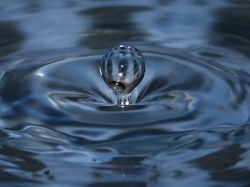Results

The majority of children of the ages 2-10 demonstrated through his/her interview that he/she had no prior knowledge and understanding of the process of condensation. However; a few of the children between 8-10 demonstrated partial knowledge and understanding.
Participants of the age range 11-15 continued to demonstrate a partial understanding of condensation, while participants 16 and older mostly demonstrated a more thorough understanding of condensation.
While watching the video project, you will notice how younger participants construct knowledge based on concrete observations, such as the cup is wet, the water spills over, or by using their hands to express their ideas. Older participants construct knowledge based on more abstract ideas, explaining states of matter, molecular motion, and recalling a wider range of vocabulary terms.
Participants of the age range 11-15 continued to demonstrate a partial understanding of condensation, while participants 16 and older mostly demonstrated a more thorough understanding of condensation.
While watching the video project, you will notice how younger participants construct knowledge based on concrete observations, such as the cup is wet, the water spills over, or by using their hands to express their ideas. Older participants construct knowledge based on more abstract ideas, explaining states of matter, molecular motion, and recalling a wider range of vocabulary terms.
So, what does it all mean?

A lot of people think that condensation only comes from the air, but in reality there's water in almost everything! It's the heat that makes the process occur. When warm moisture hits a cold object, condensation forms on the object.
Image credited to: flickr user Snap®
Why the fuss on understanding?
Students' understanding on condensation influences their ideas about clouds, rain and the water cycle. Understanding why condensation occurs, recreating the process, and recognizing condensation beyond obvious examples gives learners a greater appreciation for the importance of water in our environment.
Image credited to: flickr user Snap®
Why the fuss on understanding?
Students' understanding on condensation influences their ideas about clouds, rain and the water cycle. Understanding why condensation occurs, recreating the process, and recognizing condensation beyond obvious examples gives learners a greater appreciation for the importance of water in our environment.
